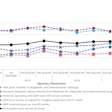Dear X-Ray Insider,
For many years, I lived in the converted attic apartment of a Victorian house. Below me, occupying the rest of the building was a family of four with two children. When the eldest was about 3 years old, this generally good-natured child would let out blood-curdling screams on two occasions: hair-washing night and whenever the child was put on the toilet for an extended session. In both cases, the complaint was the same: "Mommy, it hurts!"
Constipation during childhood is a common and painful condition. Reasons for this inability to void can include physical one and psychological ones, such as the development of a pathological fantasy world around the mysteries of the internal body (Medical Journal of Australia, October 3, 2005, Vol. 183:7, pp. 391-392).
In the majority of cases, a mental blockage can be dealt with through counseling, or it will simply resolve itself as the child matures. However, occasionally a physical problem is the root cause of intractable constipation. In these instances, the assessment of fecal loading is not a simple task. The most reliable test, measuring colonic transfer time (CTT), requires multiple abdominal radiographs over many days.
An alternative method involves evaluating a single abdominal x-ray with several kinds of scoring systems, such as the Leech method. But do these "one-stop shopping" systems actually work? Two groups of Dutch radiologists put these x-ray scoring systems to the test and came up with varying results. To read more, click here.
Also in the X-Ray Digital Community, you'll find articles on the safety of x-ray contrast agents; the value of dual-energy subtraction x-ray for thoracic abnormalities; the potential growth of the Asian digital x-ray market; and whether a formatted checklist offers any benefits for reading chest x-rays.

















